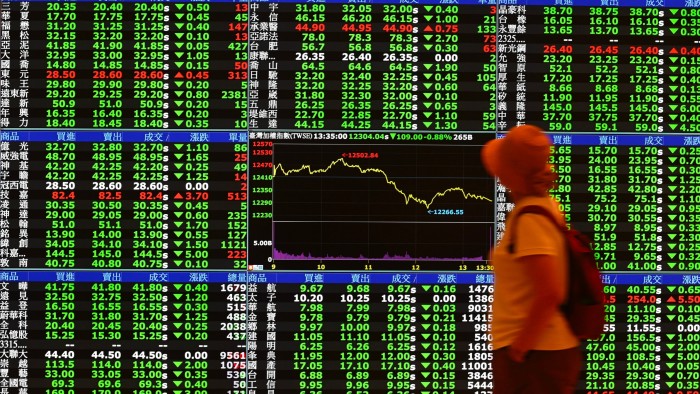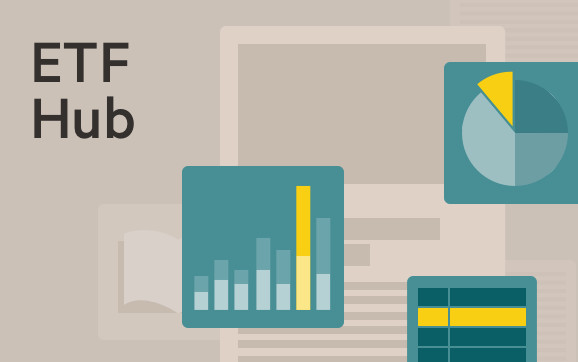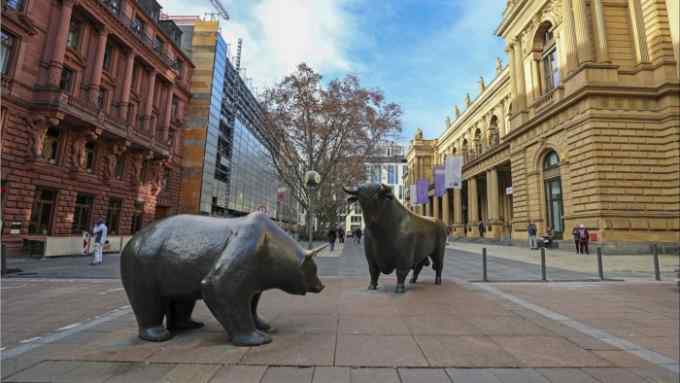Greater China investors join global migration to ETFs

Simply sign up to the Exchange traded funds myFT Digest -- delivered directly to your inbox.
Latest news on ETFs
Visit our ETF Hub to find out more and to explore our in-depth data and comparison tools
Investors in the greater China region are joining other global investors moving money out of mutual funds and into exchange traded funds, research from Brown Brothers Harriman shows.
Despite widespread mutual fund industry redemptions, the ETF landscape in mainland China, Hong Kong and Taiwan has been “thriving”, BBH’s latest Greater China ETF investor report said.
Total ETF assets in the three markets jumped 12 per cent from $300bn to $336bn during 2022 despite significant market headwinds, with much of inflows to ETF products accounted for by outflows from mutual funds, the report found.
Hong Kong’s ETF market had $6bn in net new flows last year, while mainland China recorded $60bn in net inflows, BBH said, citing ETFGI data.

This article was previously published by Ignites Asia, a title owned by the FT Group.
Taiwan’s ETF market recorded total net sales of $24bn last year, according to Securities Investment Trust & Consulting Association data analysed by Keystone Intelligence.
Taiwan, which has had a massive ETF boom over the past couple of years, has seen onshore ETF assets grow from NT$333bn (US$10.7bn) at the end of 2017 to NT$2.74tn in April, according to Sitca data.
Chris Pigott, Hong Kong-based Asia head of ETF services at BBH, said “investors are looking to reallocate” to ETFs and this money was coming from actively managed mutual funds and index funds.
“But at the same time, there’s new money that’s coming into these types of products as well,” he added.
He said investors in Greater China and the wider Asia-Pacific region were finding advantages in the structural benefits of using ETFs and were no longer simply seeing an ETF wrapper as just a pure play, passive market-cap weighted product.
“Now we’re seeing a whole wide range of different strategies that are being deployed in ETFs,” Pigott said.
“Especially now, given that we’re in different macro kind of market environments, given the volatility and turbulence and so forth, this is a very strong message from investors,” he added.
Sean Cunningham, Hong Kong-based head of APAC ETF distribution at JPMorgan Asset Management, told Ignites Asia in May that investors in the Asia-Pacific region and elsewhere were turning to active ETFs for better yields, greater diversification and increased liquidity for relatively low transaction costs.
A significant 30 per cent of flows year to date in the global ETF space has been into active strategies, Cunningham said, adding that this had been achieved despite the relatively low proportion of active ETFs available in the market — only about 5 per cent of ETF assets are managed actively.
Greater China flows echo other parts of the world.
In 2022, the global ETF industry booked $856bn in cumulative net inflows, while the mutual fund market suffered $821bn in net outflows, according to the BBH report.
In mainland China, about 100 new ETFs were launched in 2022, many of which were thematic strategies such as US technology, or ETFs following the aviation and military sectors.
Latest news on ETFs

Visit the ETF Hub to find out more and to explore our in-depth data and comparison tools helping you to understand everything from performance to ESG ratings
In total, about 750 ETFs were in the China market at the end of 2022, with total assets exceeding $200bn.
“In general, the mainland market has been one of the real bright spots specific to Asia-Pacific ETF growth,” Pigott said, adding that investors were using ETFs as an important component of their diversification strategy as they look to invest offshore.
The BBH report surveyed more than 100 institutional investors based in the greater China region, with the majority managing more than $1bn in assets each. Of the respondents, 77 per cent reported having more than 25 per cent of their portfolio invested in ETFs as of January 2023, up 11 per cent from 2022.
ETF uptake in the Greater China region is poised to continue over the next year as the majority of investors surveyed said they would either be maintaining or increasing their exposure to these products, according to the report.
*Ignites Asia is a news service published by FT Specialist for professionals working in the asset management industry. Trials and subscriptions are available at ignitesasia.com.

Comments